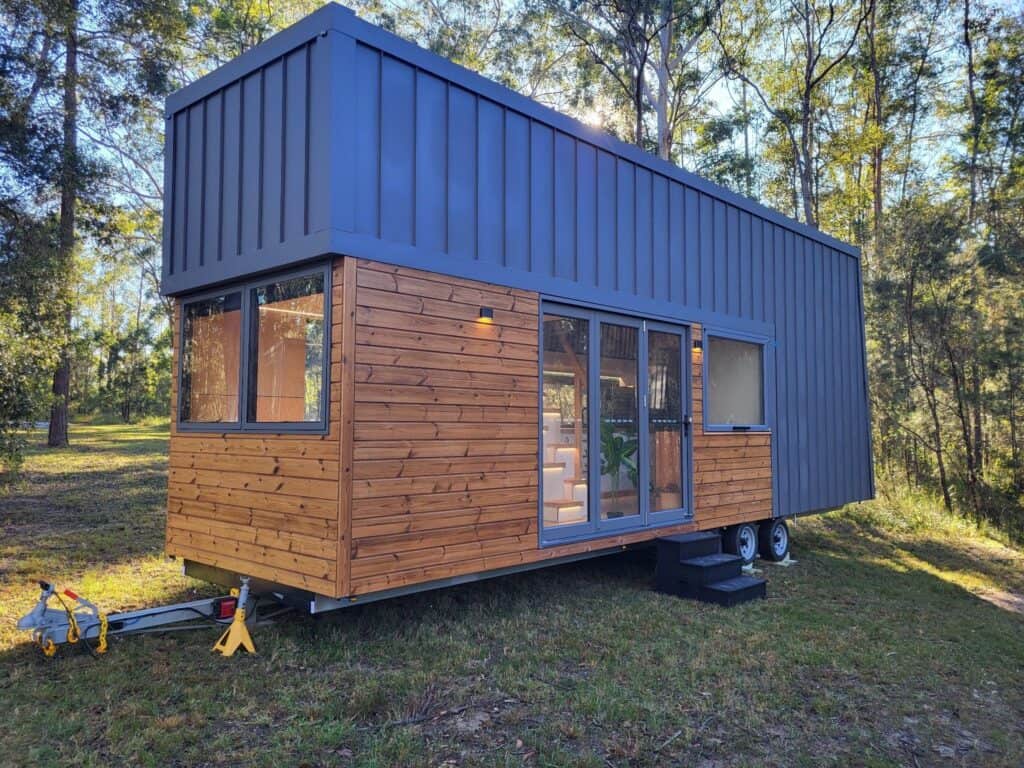The real estate market is ever-evolving, and one of the most exciting trends in recent years has been the rise of tiny homes. These small, affordable, and efficient homes appeal to a wide range of buyers, from eco-conscious individuals to those seeking a minimalist lifestyle or those interested in cost-effective housing solutions. However, the traditional Multiple Listing Service (MLS), primarily designed for larger properties, does not always cater well to this growing niche. In this article, we’ll explore how MLS can be tailored to meet the needs of the tiny home market and why it’s a valuable tool for both buyers and sellers.
What Are Tiny Homes?
Before diving into how the MLS can cater to tiny home markets, let’s first define what tiny homes are. Tiny homes are typically residential structures that are 400 square feet or smaller. They are often built with sustainability, mobility, and affordability in mind. Many tiny homes are designed to be mobile, and mounted on trailers, while others are fixed on a foundation. Tiny homes have become especially popular due to their affordability, minimal environmental impact, and the flexibility they offer to owners who may wish to downsize or embrace a nomadic lifestyle.

Why the MLS Needs to Cater to Tiny Home Markets
The traditional MLS is heavily focused on standard residential properties, with little regard for niche categories like tiny homes. However, as the demand for tiny homes continues to grow, MLS platforms need to adapt and offer features that cater to this unique market. Here are several reasons why:
- Increasing Demand for Tiny Homes: As more people become interested in sustainable living, minimalism, and affordable housing, the demand for tiny homes is on the rise. According to various reports, the tiny home movement is gaining traction worldwide, and MLS platforms that can showcase these properties stand to capture a growing market of buyers and investors.
- Mobile Nature of Tiny Homes: Many tiny homes are mobile, and their listing information must reflect this fact. The MLS is generally set up for traditional properties, but tiny homes often require additional details like mobility, whether they’re on trailers, and where they can be relocated. These features are critical for potential buyers and need to be integrated into MLS listings.
- Niche Market: The tiny home market is relatively niche, but it’s growing rapidly. By catering to this niche, MLS platforms can position themselves as the go-to place for buyers and sellers of tiny homes, attracting a new demographic of customers.
- Unique Financing Needs: Financing a tiny home is often different from financing a traditional home. Since many tiny homes fall below the threshold for traditional mortgages, buyers often need alternative financing methods like personal loans, RV loans, or tiny home-specific financing options. The MLS needs to accommodate these specific financing options to make it easier for buyers to navigate the market.
How to Tailor MLS for the Tiny Home Market
Now that we understand why the MLS should cater to the tiny home market, let’s explore how this can be achieved. The traditional MLS can be adapted in several ways to ensure tiny homes are properly represented and marketed.
1. Include Tiny Home-Specific Filters
MLS platforms should include specific filters for tiny homes to help both buyers and sellers easily find properties that meet their needs. These filters might include:
- Square footage: Tiny homes are defined by their size, usually 400 square feet or less. Including a square footage filter would allow potential buyers to narrow their search to only tiny homes.
- Mobile or stationary: Many tiny homes are mobile and can be moved from location to location, while others are fixed on a foundation. Listings should have a filter that specifies whether the home is on wheels (mobile) or built on a permanent foundation (stationary).
- Built on trailers: For mobile tiny homes, listing whether the home is built on a trailer or a custom foundation is crucial for buyers who are looking for portable living options.
- Zoning and location: Tiny homes often have specific zoning requirements, especially if they are to be placed on land or used as accessory dwelling units (ADUs). The MLS should allow filtering based on zoning and location to ensure that buyers are aware of any restrictions.
2. Provide Detailed Listings of Tiny Home Features
Tiny homes often come with unique features that need to be highlighted in the MLS listing. While traditional homes may focus on the number of bedrooms, bathrooms, and square footage, tiny home listings should include additional details:
- Innovative designs and layouts: Tiny homes often have clever use of space, including lofted beds, convertible furniture, and multi-functional rooms. Detailed descriptions or photos of these design elements can make the property more appealing.
- Sustainable features: Many tiny homes are built with sustainability in mind, such as using eco-friendly materials, solar panels, rainwater harvesting systems, or composting toilets. Buyers interested in eco-conscious living will want to know these details.
- Customization options: Many tiny homes are custom-built or have the potential for customization. Including information about whether the home can be modified or whether certain features (like furniture) are included can be a key selling point.
3. Highlight Financing Options for Tiny Homes
As mentioned earlier, financing for tiny homes can differ from traditional homes. MLS platforms should make it clear which financing options are available for each listing, whether it’s through personal loans, RV financing, or specific tiny home financing programs. Providing these details upfront can help potential buyers quickly determine if the property is within their financial reach.
In addition, MLS platforms can provide information on how tiny home financing works and list any specific criteria that buyers must meet to qualify for these alternative financing methods.
4. Include Tiny Home Communities and Land Listings
Many tiny home buyers are not just purchasing the home itself—they are also looking for land on which to place it. MLS listings should include tiny home communities or plots of land that are zoned for tiny homes. This can be especially important for those purchasing mobile tiny homes who need a space to park and live.
Some MLS platforms already include land listings, but for tiny home buyers, specific zoning for tiny homes or ADUs should be emphasized. These listings could specify whether the land is suitable for a tiny home community or if it’s a privately-owned plot of land.
5. Use Professional Photography and Virtual Tours
Tiny homes are known for their creative and efficient use of space, so high-quality photos are essential to highlight their best features. MLS listings should encourage sellers of tiny homes to use professional photography that focuses on the interior layout and design of the home. Virtual tours and videos can also be useful tools, as they allow potential buyers to experience the layout and flow of the home in greater detail.
6. Provide Educational Content
Since tiny homes are still a niche market, many buyers may not fully understand the benefits and challenges of tiny home living. MLS platforms could include educational content on tiny homes—such as articles, blog posts, or videos—within the listings. This could cover topics like:
- The pros and cons of tiny home living
- Zoning and legal considerations for tiny homes
- How to finance a tiny home
- The environmental benefits of tiny homes
Providing this kind of educational content can help attract potential buyers and guide them through the process of purchasing and living in a tiny home.
Conclusion
The rise of tiny homes represents a growing shift in the real estate market toward affordable, sustainable, and flexible living. To cater to this emerging market, MLS platforms must adapt to include features that address the unique needs of tiny home buyers and sellers. By implementing tiny home-specific filters, providing detailed property listings, highlighting financing options, and offering educational resources, MLS platforms can become a valuable tool for those involved in the tiny home market. As more people embrace the tiny home lifestyle, MLS platforms must evolve to meet the demands of this growing niche.













